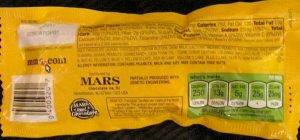The latest in food-industry sponsored research: Pears!
I completely understand that the food business is fiercely competitive, not least because the U.S. food supply provides about twice the calories needed by the population on a daily basis—4000 calories each in 2010—and companies have to sell all that.
The makers of processed foods and drinks spend fortunes marketing their foods in this environment. Now producers of fruits and vegetables feel that they too need to compete. They form trade associations to do this for them and to pay for research they can use to market their products as “superfoods.”
Meet, for example, the Pear Bureau Northwest, which pays for research and sends press releases about its only-to-be-expected positive results, in this case “New Research Indicates Regular Fresh Pear Consumption May Improve Blood Pressure in Middle-Aged Men and Women with Metabolic Syndrome” (my emphasis).
I like pears. They are delicious when ripe. But superfoods? Really?
As always, the operative word is “may.”
This study compared the effects of eating 2 medium-sized fresh pears or or 50 g of a pear-flavored drink per day for 12 weeks. Well, duh.
In my collection of industry-funded studies last year were two sponsored by the busy Pears Bureau Northwest.
Systematic Review of Pears and Health. Holly Reiland, BS Joanne Slavin, PhD, RD. Nutrition Today November/December 2015 – Volume 50 – Issue 6 – p 301–305.
- Conclusions: Animal studies with pears suggest that pears may regulate alcohol metabolism, protect against ulcers, and lower plasma lipids. Human feeding studies with pears have not been conducted. In epidemiological studies, pears are combined with all fresh fruits or with apples, because they are most similar in composition. The high content of dietary fiber in pears and their effects on gut health set pears apart from other fruit and deserves study.
- Funding: The authors received a grant from USA Pears in the past. The authors provided their own funding to allow this article to publish as Open Access.
- Comment: Pears are a great fruit but the marketing purpose of this study is evident from this press release from the Pear Bureau Northwest: “While the body of evidence connecting pear intake and health outcomes is still limited, USA Pears has been contributing to research efforts by commissioning independent studies to learn and affirm the heath attributes of pears. Visit www.usapears.org for additional pear research, nutrition resources and recipes.”
Fresh Pear Consumption is Associated with Better Nutrient Intake, Diet Quality, and Weight Parameters in Adults: National Health and Nutrition Examination Survey 2001-2010. O’Neil CE, Nicklas TA, Fulgoni VL (2015) J Nutr Food Sci 5: 377.
- Conclusion: Compared to non-consumers [of pears], consumers were 35% less likely to be obese (p<0.05). Fresh pears should be encouraged as a component of an overall healthy diet.
- Funding: Partial support was received from the United States Department of Agriculture/ Agricultural Research Service (USDA/ARS)…Partial support was also received from Pears Bureau Northwest.
- Comment: I’m guessing the same result could be obtained by looking at consumption of any other fruit. And to prove my point that this is about marketing, here’s the press release.
Will this research help sell more pears? We will see.
Is it wrong to want to have more pears sold? Not at all, but why do this at the expense of any other fruit, all of which contain valuable nutrients.
If pears are superfoods, all fruits are superfoods.
Eat the ones you like.
.



